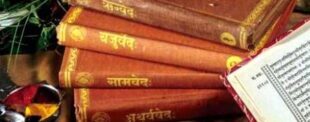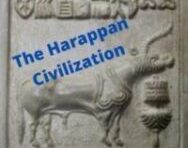
Later Vedic Period | Ancient History Short Notes
Later Vedic Period notes/study material for preparation of UPSC, BPSC, UPPSC and other State PSC Examinations.
Home » UPSC Study Materials » Prelims Express » Ancient History Short Notes » Jainism in India | Ancient History Short Notes
Jainism in India notes/study material for preparation of UPSC, BPSC, UPPSC and other State PSC Examinations.
The word ‘Jain’ is derived from ‘Jina’ or ‘Jaina’ which means the ‘Conqueror’.
Rise of Jainism in India as a heterodox sect was in response to the existing orthodox and ritualistic nature of religion dominated by rites and rituals. Jainism became a prominent religion in India during the 6th century BC.
You can read more about the causes for the rise of Jainism and Buddhism here : Read Now
You can read more details about the Tirthankaras of Jainism here : Read Now
To attain salvation, Mahavira propounded three principles of Jainism, also known as Triratnas (three gems) which are:
As per Mahavira’s teachings, all objects have souls and various degrees of consciousness.
They possess life and feel pain when they are injured. Even the practice of agriculture was considered sinful as it causes injury to the earth, worms and animals.
Mahavira rejected the authority of the Vedas and propounded that the universe and all its substances or entities are eternal. It has no beginning or end with respect to time.
By the end of the fourth century B.C., there was a serious famine in the Ganges valley. Many Jain monks led by Bhadrabagu and Chandragupta Maurya came to Shravanabelagola in Karnataka. Those who stayed back in north India were led by a monk named Sthulabahu who changed the code of conduct for the monks.
This led to the division of Jainism into two sects Svetambaras (white clad) and Digambaras (Sky-clad or Naked).
Jain Architecture includes various caves, Sculptures and temples. Some of the worth mentioning examples of Jain architectures are :
Caves:
Temples:
Gommateshwara statue – It is a 57-foot (17 m) high monolithic statue in the town of Shravanabelagola in Karnataka. Carved of a single block of granite, it is one of the tallest monolithic statues in the world.
Anekantavada – As per Anekantavada philosophy, reality can be examined from many standpoints. The same thing can be described from several standpoints and all can be equally true. This particular school promotes tolerance of contrary opinions.
There were several causes for the decline of Jainism in India.
Severity in the code of conduct of Jainism, decline in royal patronage, incomprehensible philosophy for common people, division into sects, rise and spread of Buddhism, bhakti movement and the rise in popularity of Vaishnavism and Shaivism were the primary causes for the decline of Jainism.
You can read about the Decline of Jainism in more details here : Read Now
In the next Chapter, we will study about the Buddhism.
You can study complete ancient history in a chapterwise format here : Ancient History Chapter-wise notes
You can solve ancient history chapterwise MCQs here : Ancient History Chapter-wise MCQs
You can read all the CivilsCracker Explained articles for Ancient History here : CivilsCracker Explained
You can read all the UPSC free study materials for all subjects here : Free UPSC study materials for all subjects
You can solve chapterwise MCQs for all subjects here : Chapterwise MCQs for all subjects

Later Vedic Period notes/study material for preparation of UPSC, BPSC, UPPSC and other State PSC Examinations.

Rig Vedic / Early Vedic Period notes/study material for preparation of UPSC, BPSC, UPPSC and other State PSC Examinations.

Vedic Literature notes/study material for preparation of UPSC, BPSC, UPPSC and other State PSC Examinations.

Indus Valley Civilization notes/study material for preparation of UPSC, BPSC, UPPSC and other State PSC Examinations.

Pre-Historic Period notes/study material for preparation of UPSC, BPSC, UPPSC and other State PSC Examinations.
We are adding new Notes, Chapterwise MCQs, Quizzes, Previous Years Questions everyday
We are adding new Notes, Chapterwise MCQs, Quizzes, Previous Years Questions everyday